How one geology class led to a 10-day Alaskan adventure
By Margaret Wilson
For Prof. Dave Sunderlin, it’s all about getting your hands on the rocks.
Sunderlin, John H. Markle Professor of Geology and department head, names hands-on fieldwork as one of the most impactful experiences of his undergraduate education. Now, he’s made a point to provide that opportunity to his students at Lafayette.
“We’re going to learn something new about the ancient world, and we’re going to find who we are as developing scientists, and who we are as people,” Sunderlin says.
In June 2024, geology students Ellie Spencer ’26 and Kate Marrs ’26 found themselves embarking on just such a journey with Sunderlin, traveling to a remote island in Alaska to uncover fossils never before seen by human eyes. The trip was funded by The Fund for Education Beyond the Classroom, an endowment fund established by Walter “Bud” Scherr ’78 that supports students working collaboratively with organizations and other entities away from campus on real-life projects which have a tangible result, with preference given to students in the sciences and engineering.
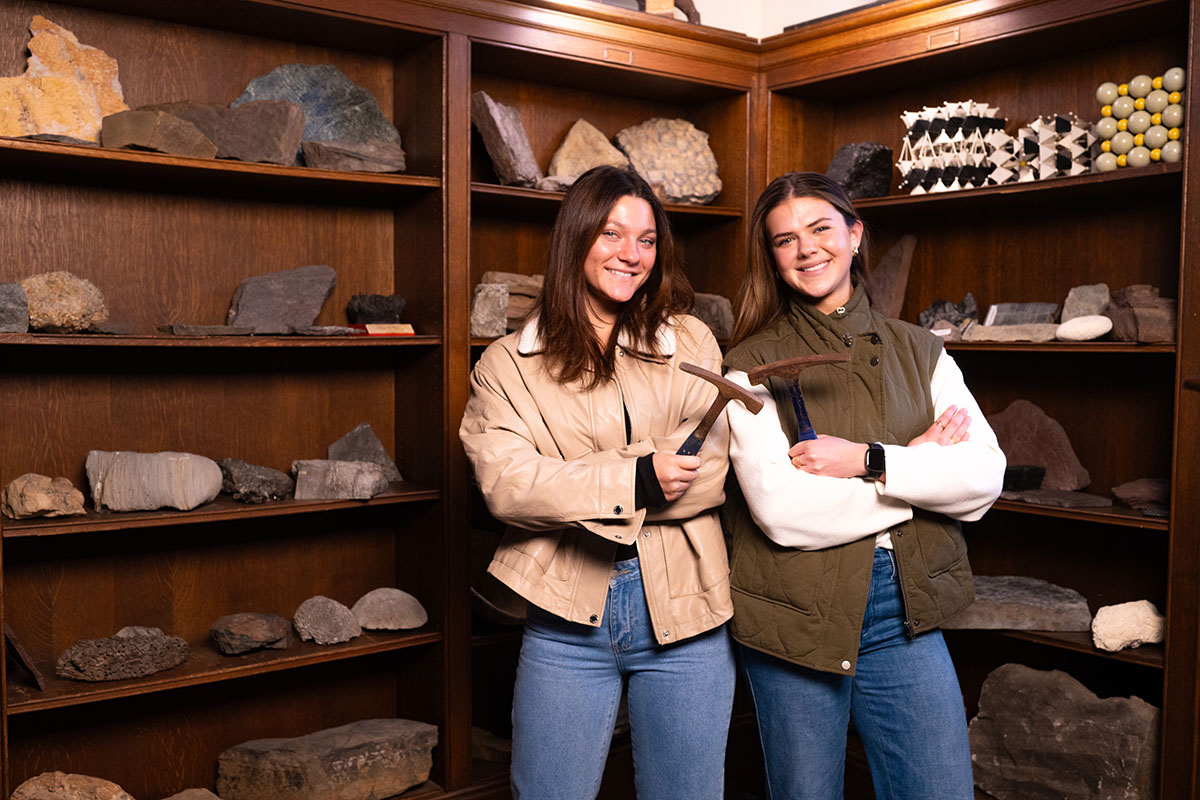
Kate Marrs ’26 (left) and Ellie Spencer ’26 (right) hold rock hammers from their trip to Alaska. | Photo by Adam Atkinson
Marrs, a geology major with a biology minor, and Spencer, a biology major with a geology minor, had both taken Sunderlin’s Sedimentology & Stratigraphy class, where they stood out to him as being well suited for a once-in-a-lifetime expedition.
“I knew they both clearly had a positive, adventure-seeking attitude,” Sunderlin says. “But on the back of that was a determinedness. It’s a fascinating and great combination of both ‘Hey, I’ll give this a try’ and ‘I’m going to work until I get this thing done.’”
Sunderlin was tipped off by a colleague to a deposit of broadleaf plant fossils on an unnamed outcropping off the coast of Prince of Wales Island in the southeastern tip of Alaska. After a scouting trip on his own, Sunderlin employed the help of Marrs and Spencer to examine the fossils in order to better understand the forest structure of Earth during a warmer period of its deep history.
“You never know what the layer [of rock] you’re going to open is going to have,” Spencer says. “Sometimes you open one up, and it’s in perfect preservation. And it was like, ‘This is amazing. These have not been seen by human eyes. These have not ever been known before, and they’re millions and millions of years old.’”
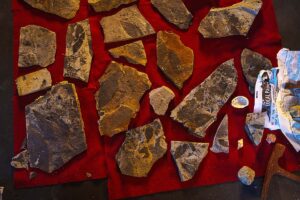
The team brought back numerous fossils of broadleaf plants. | Photo by Adam Atkinson
The trio spent 10 days in Alaska, collecting fossils on the tidal island, exploring the stratigraphy of neighboring outcroppings, hiking up mountains, and experiencing the geology of the state that Spencer and Marrs had only read about in class.
“Being out in the field and seeing everything we talked about in person, it felt like everything was just right there,” Marrs says. “It seemed so simple when we were out in the field, and it really connected those things that I didn’t understand when I was reading them on a piece of paper.”
During their fieldwork, Spencer and Marrs also gathered evidence of the ancient climate, collecting samples of compressed organic material that can be used to track the carbon makeup of the atmosphere, as well as observing boulders that seem to have been deposited by glacial movement.
“I think of [the fossils] as a sort of an ephemeral glimpse into a piece of Earth’s past, and what you can learn about this snapshot of time can be placed in context, with layers that are younger or layers that are older, to understand the change of Earth through time,” Sunderlin says. “The phase I’m really interested in is the last time the world was warm. What was it like then?”
The team has sent samples of the rock surrounding the fossils to Sunderlin’s collaborators at a geochronology lab, who can use special equipment to determine their age. Through geological detective work, the team can then estimate how many million years ago the fossil-rich layers were deposited. Once the fossils are dated and analyzed for what they indicate about the ancient Alaskan climate, Spencer and Marrs will present their findings at a professional conference.
For both Spencer and Marrs, this trip solidified a path for their future while highlighting the unique experiences available through Lafayette.
“I didn’t want it to end,” Marrs says. “I was almost nostalgic about it in the moment. I thought, ‘I need to be able to do more of this in the future, because the way I’m feeling right now is indescribable.’ I knew I wanted to be [out] in the field, that it was where I thrived. But this has really solidified it for me.”
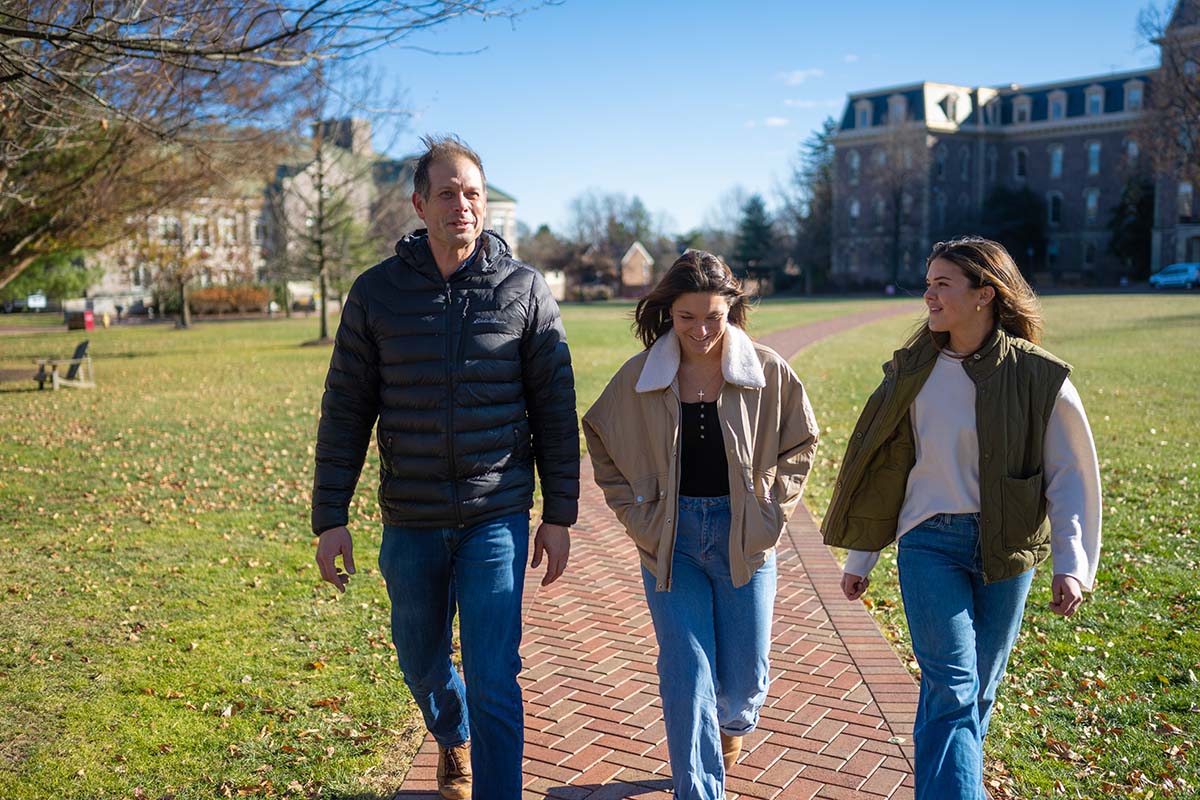
Sunderlin continues to mentor Marrs and Spencer after returning from their trip. | Photo by Adam Atkinson
Despite numerous other commitments on campus, Marrs and Spencer were able to forge unique connections and build a cross-country research trip into their schedules.
“I feel like I always have someone in my corner and people looking out for me, and if I’m struggling with something, there’s always someone willing to help,” says Marrs, who is a midfield/draw on the women’s lacrosse team. “I’ve definitely found a balance.”
Spencer, an EXCEL Scholar who is also conducting research in the biology department, is working on her thesis project concurrently with her geology fieldwork.
“At a bigger school, something like this would have been nearly impossible to pull off,” Spencer says. “This school is like a little oyster, and it can propel you, prepare you, and teach you the lessons that you’re going to need to be successful as an adult.”
“I already loved Lafayette before I went to Alaska, but I don’t think I appreciated the opportunities I was given enough,” Marrs says. “I think after going on that trip, it showed me how much there is to learn, how much I want to take advantage of the opportunities the school gives me, and how grateful I am to have them.”
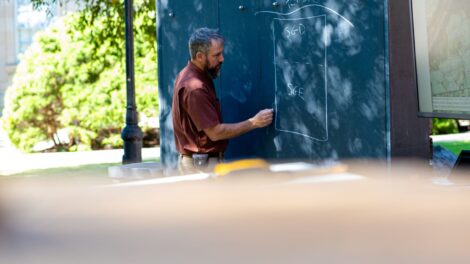
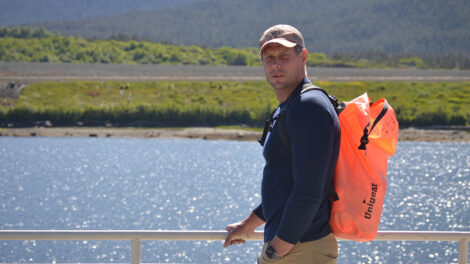
1 Comment
What an amazing opportunity!! The best geology program there is. Love to see what y’all are up to!
Comments are closed.